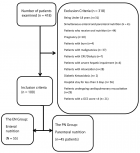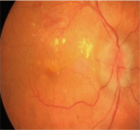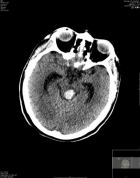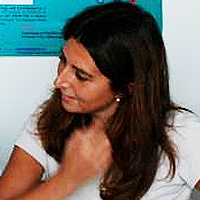Table of Contents
Prospective Community-based Study of Still Births in Remote Villages with Low Resources
Published on: 13th June, 2024
Background: Stillbirth (SB), either because of intrauterine or intrapartum fetal death, is amongst the most devastating pregnancy complications, hardest to predict, real challenge for health systems. India probably accounts for the highest SB numbers in the world.Objectives: A community-based prospective study was carried out to know the burden, and causes of SBs in rural women of remote region.Material methods: After approval of the ethics committee of the Institute in Maharashtra for broader research, which was service-oriented, the present study was conducted in 100 villages around the village with health facilities. These villages were included keeping in mind future services. After obtaining the consent of women, information was prospectively recorded on their predesigned tool (which was for broader work), by asking women and seeing their records of antenatal and intranatal care on a regular basis. The study subjects were selected after obtaining information from nurse midwives, Accredited Social Health Activists (ASHAs), and Aaganwadi workers. As the plan was to serve, there was excellent cooperation. The tool was made for broader work. Villages were visited 5 days a week. Study was community-based in villages in remote, hilly region with various local issues so any information the women gave conclusion and was in the record was used.Results: A total of 3905 births occurred over two years, 3635 (93%) term, and 270 (7%) preterm. Amongst 3635 term births, 3474 (95.6%) were live births, 161 (4.4%) SBs, amongst 270 preterm births, 239 (88.5%) were live births, 31 (11.5%) SBs. Of 192 SBs, 48 (7.2%) SBs were amongst 2690 women with anaemia, (16 (2.4%) SBs amongst women with very severe anaemia, 12 (1.8%) SBs were amongst 667 women with severe anaemia, 12 (1.8%) SBs were amongst 664 women with moderate anaemia, 8 (1.2%) SBs were amongst 680 women with mild anaemia). Overall of 192 (4.9%) SBs, 31 (18.1%) SBs were among 517 women with hypertensive disorders of pregnancy (HDsP) 8 (4.4%) SBs amongst 280 women with moderate HDsP, 12 (6.9%) SBs amongst 175 women with severe HDsP, 11 (6.8%) SBs in 62 women with eclampsia. Overall of 192 SBs, 6 (3.1%) babies had weight < 1 kg, 8 (4.1%) of ≥ 1 to < 1.5 kg, 50 (26.0%) ≥ 1.5 to < 2 kg, 64 (33.3%) ≥ 2 to < 2.5 kg, 64 (33.3%) 2.5 kg and more, obviously fewer babies more deaths in birth weight less than 1. 5 kg, more so less than 1 kg.Conclusion: Overall SBs were in women with disorders but 4.5% SBs did occur in women with no disorder. SBs were significantly higher amongst babies weighing less than 1 kg, beyond this weight, numbers were similar.
Successful Management of a Giant Splenic Cyst during Pregnancy: A Rare Case
Published on: 27th May, 2024
Background: Maternal splenic cyst during pregnancy appears to be a rare pathology whose treatment is not codified. The most feared complication is rupture during pregnancy. It occurs in 60% of cases in the third trimester of pregnancy, leading to significant maternal-fetal morbidity and mortality. Case report: We describe the successful management of a 24-year-old patient, G1P0, with a history of a recurrent splenic cyst. She presented with a giant splenic cyst measuring 28 cm in diameter at 30 weeks of amenorrhea. A cesarean section was performed at 37 weeks gestation. A splenectomy was performed on day 21 postpartum.Conclusion: The incidence of splenic cysts is extremely rare during pregnancy. The diagnosis must be made as early as possible to undertake appropriate treatment before the appearance of maternal-fetal complications.
A Retrospective Analysis of Maternal Mortality in a Tertiary Care Centre at District Level
Published on: 23rd May, 2024
Background: Maternal mortality is a very sensitive indicator of our health system and services. Epidemiological data about maternal mortality is a vital requirement in every setting not only to design interventional programs but also to identify gaps in the existing structures, to reduce the ratio favorably. This study was an attempt to shed light on the mortality rate in our hospital, to analyze the epidemiological aspects, causes of maternal mortality, and types of delay, and to suggest recommendations for improvement. Methods: A retrospective study was done at a tertiary care center at the district level from January 2022 to December 2022. Demographic data and details of selected parameters were obtained from maternal death review forms and case records. Data analyzed and presented.Results: The majority of the maternal deaths could be attributed to direct obstetric causes like Eclampsia (29.41%), Pre-eclampsia (20.59%), and anemia (20.59%) followed by hemorrhage (14.71%), and septicemia (11.76%). Medical conditions contributing to death included liver disorders (5.8%), COVID-19 infection (5.8%), and cardiac disorders (2.9%). Conclusion: It is evident that the maternal mortality ratio is significantly high, with a majority of the deaths occurring due to avoidable causes. Leading contributory factors were due to delay in seeking help or delay in referral. High-risk cases must be identified at the earliest and referred to higher centers for management from the first trimester itself. Generating awareness among the common public and counseling the gravidas and their caretakers throughout pregnancy is equally important to prevent maternal mortality and near-miss cases.
Morular Metaplasia of the Endometrium: A Case Report and Literature Review: Care Pathways based on Molecular Biology
Published on: 30th April, 2024
Background: Endometrial morular metaplasia, a clinical conundrum from a diagnostic and management angle given its rarity and low oncogenic potential, has been linked to endometrial hyperplasia and carcinoma. Case report: A 77-year-old woman with no significant past medical history, was found to have an asymptomatic thickened endometrium on pelvic imaging, after presenting with lower abdominal pain, 3yrs ago. Diagnostic hysteroscopy identified an endometrial polyp within a pyometra. Histopathology showed focal complex endometrial hyperplasia without atypia with superimposed morular metaplasia(EMM) with a negative microbiology assay.Following conservative management with multidisciplinary team(MDT) overview, as-per patient choice with 6-monthly follow-up hysteroscopy, endometrial biopsies and a short use of the Mirena® Intrauterine system (discontinued following poor tolerance), histopathology shows resolved hyperplasia with persistent EMM. Due to persistent disease, a hysterectomy is under consideration.Discussion: Current evidence suggests that a sub-type of EMM, a likely histological manifestation of beta-catenin (CTNNB1) gene mutation: could be a precursor of endometrial hyperplasia and low-grade endometrioid-endometrial carcinoma sub-type. Though low-grade in nature, the increased recurrence risk raises significant concerns.Prognostication following gene mutation identification can help with management options which include conservative, hormonal therapy with adjunct repeat endometrial sampling: or hysterectomy. The optimal frequency of endometrial sampling when uterine-sparing, is unclear, leading to a management conundrum, whilst persistent disease may require a hysterectomy.Conclusion: Management of endometrial morular metaplasia can be difficult but must reflect the woman’s choice with a MDT-overview. Immuno-histochemical tools utilizing new molecular biological advances, can simplify the diagnostic and prognostication processes, aiding clinical management.
Sexual Dimorphism in Autoimmune Disorders
Published on: 25th April, 2024
Sexual dimorphism exists in Homo sapiens in many systems. Lately, it was found that it also exists in autoimmune disorders. Generally, it was known that the two genders in humans have different endocrine systems, and therefore hormone hormone-regulated systems show sexual dimorphism. However, in the case of autoimmune disorders, it is not due to directly on hormonal milieu but depends on X-chromosome inactivation in males. Whereas every cell in a woman’s body produces Xist; this ribonucleoprotein contains about 81 proteins. This chromosomal inactivation in males and formation of Xist ribonucloprotein in females is responsible for sexual dimorphism in autoimmune disorders in humans.
COVID-19 Pneumonia in Pregnancy: A Retrospective Study on Maternal and Neonatal Outcomes
Published on: 8th April, 2024
Objective: To identify risk factors among pregnant with COVID-19 for adverse outcomes related to disease severity, maternal mortality, and morbidity.Materials and methods: In this retrospective study, 45 pregnant patients with COVID-19 pneumonia were confirmed by RT-PCR. The inclusion criteria were pregnant patients diagnosed with COVID-19 confirmed by RT-PCR and hospitalized in the gynecology-obstetrics and intensive care unit. Exclusion criteria were non-pregnant patients and pneumonia cases with unconfirmed COVID-19 causes. The study used SPSS software to analyze the data. Results: Our study recorded 45 cases of SARS-CoV-2 infection in pregnant women over 2.5 years. The age group most affected was 20-35 years, with 75% of cases. 57% of patients had no known comorbidities. 88.8% of patients were symptomatic at diagnosis. Almost 30% of patients required admission to the ICU, with 60% requiring oxygen supplementation. The study recorded 36 live births (80%), of which 26 cases (72.2%) required no further care and had a favorable outcome.Conclusion: Pregnant women with medical conditions are at higher risk of severe COVID-19, which can cause respiratory distress syndrome and impact delivery and neonatal outcomes. Preventive measures are important.

HSPI: We're glad you're here. Please click "create a new Query" if you are a new visitor to our website and need further information from us.
If you are already a member of our network and need to keep track of any developments regarding a question you have already submitted, click "take me to my Query."





















































































































































